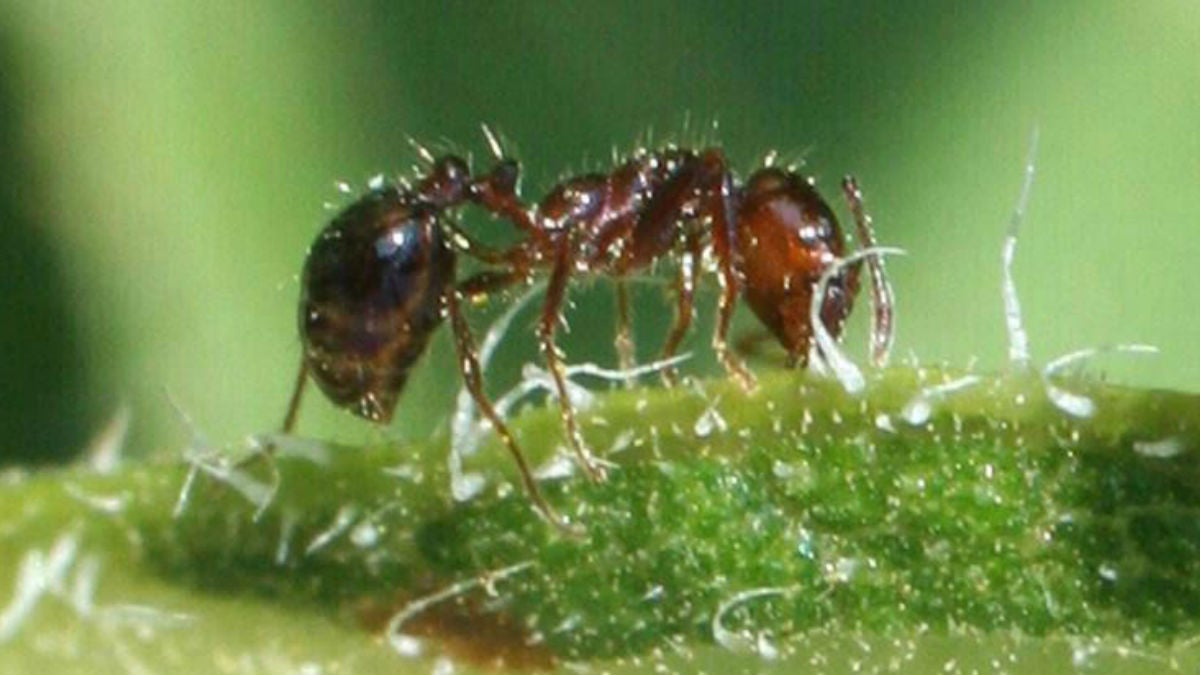Fire ant warning in Delaware

(photo courtesy Invasive.org/Russ Ottens, University of Georgia, Bugwood.org)
The state Department of Agriculture is sounding the alarm after red imported fire ants were found at a Sussex County business.
If you’ve ever been stung by a red imported fire ant, you won’t soon forget the pain. Despite their small size, the three to six millimeter ants pack a powerful punch. They’re stings contain a powerful venom that can cause a variety of reactions in humans and animals in addition to the pain.
While the ants aren’t in Delaware yet, state agriculture leaders want to keep it that way. That’s why they’re concerned about the discovery of red imported fire ants during a routine check by a Dept. of Ag nursery inspection team.
“Buyers of tropical nursery stock- such as palm trees- should carefully inpsect their plants for small, aggressive red stinging ants,” said Stephen Hauss, Cooperative Agricultural Pest Survey Coordinator. “We need these to be reported quickly and promptly to keep them from spreading or staying in Delaware over the winter.”
The federal government has issued a quarantine in parts or all of Alabama, Arkansas, California, Florida, Georgia, Louisiana, Mississippi, New Mexico, North Carolina, Oklahoma, South Carolina, Tennessee, Texas, Virginia, and Puerto Rico. Anyone who travels from those states should not bring plants or plant material back to Delaware unless it has been inspected.
“We are urging caution on all fronts because of the ability of fire ants to spread quickly and the danger they pose,” said Faith Kuehn, plant industries administrator for the Dept. of Ag. “We have had good luck so far keeping the red imported fire ant from becoming established in Delaware, but that depends on prompt reporting and inspections.”
Ag leaders say the ants pose a hazard to humans, animals, and agriculture. They say young trees are susceptible to ant stings, and their nests, which can be as high as 18 inches and as wide as three feet, can interfere with cultivation and harvesting for farmers.
WHYY is your source for fact-based, in-depth journalism and information. As a nonprofit organization, we rely on financial support from readers like you. Please give today.





